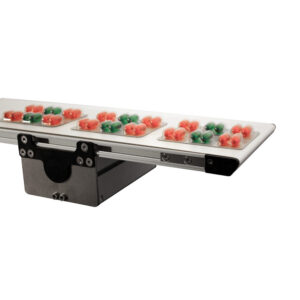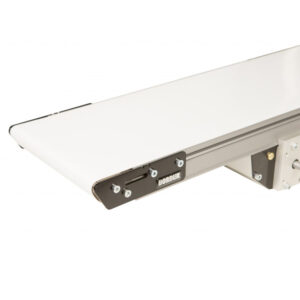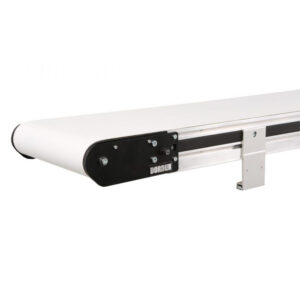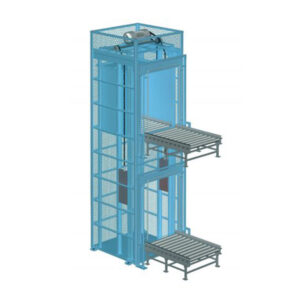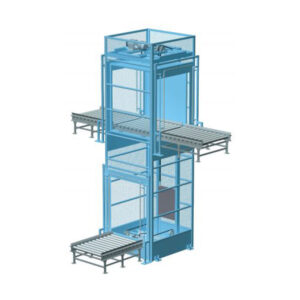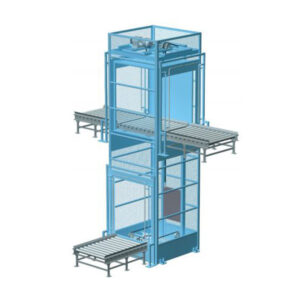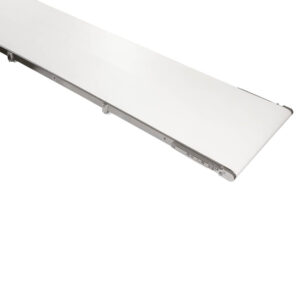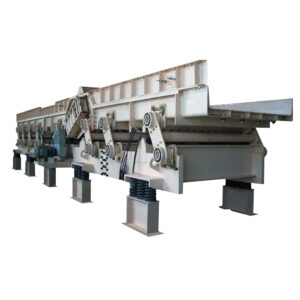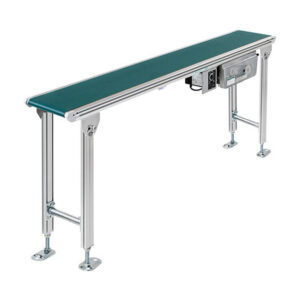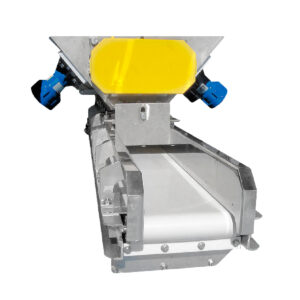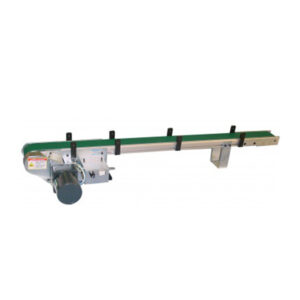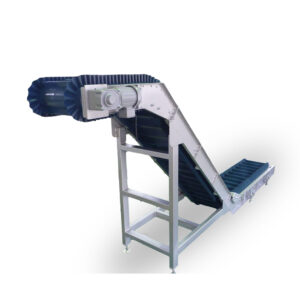Conveyor
Showing 1–24 of 211 results
- Conveyor, Industrial Machinery, Rubber Belt Conveyor
2Mtr Rubber Belt Conveyor – Packserv Pty Ltd.
Suitable for containers of all shapes and material types.
Our PBC-6-2 rubber belt conveyor measures 2000mm in length and is designed to handle all types of containers, regardless of shape or material, as long as they can stand on their own. Containers are usually fed to the conveyor to assist with other production line systems, such as filling, capping, labeling, marking, and sealing. The belt of this conveyor is 300mm wide.
SKU: n/a - Belt Conveyor, Conveyor, Industrial Machinery
3200 Belted Conveyors – Dorner Mfg. Corp.
Heavy duty low maintenance fabric belt conveyors.
The 3200 Series heavy-duty, low-maintenance conveyors are perfect for medium to heavy-sized parts, precision applications, bulk handling, and both automated and manual assembly. Featuring both fabric and modular belts, these conveyors are designed for high speeds, long runs, and up to four curves per conveyor.
SKU: n/a - Conveyor, Industrial Machinery, Vertical Conveyor
Actuator KHS – SUZUKI SEIKI CO.LTD.
Efficient and Versatile Vertical Conveyor for Medium-Weight Loads. Safely transport up to 1.5t at speeds of up to 30m/min. Easy-to-use controls with safety features and various detection systems for enhanced protection. Ideal for quick and cost-effective installation.
The KHS Actuator is a medium-sized, vertical, automated conveyor for the manufacturing industry. It can handle a maximum load of 1.5 tons and reach speeds of up to 30m/min. The work can be loaded and unloaded in the same direction (C-type) or in the front and back direction (Z-type).
This product offers a cost-effective and rapid installation solution compared to freight elevators, and it is exempt from building regulations.
Key Features:
– Accident prevention facilities: It can be equipped with a load detection device. The user-friendly control panel includes an emergency button. A buzzer provides alerts and warnings during start-up and in case of abnormalities. Optional signal displays and light indicators allow real-time monitoring of operational, full, and abnormal statuses. The machine is equipped with functions to prevent leaving items in the cabin when stopping (cycle stop) or when the transport level is full (full stop) for continuous conveying.
– Various abnormality detection devices: The machine is equipped with safety devices to forcibly stop the operation and protect the cargo and the machine in case of various abnormalities.
– The specifications of safety devices may vary for pallet conveyance.Please note that the provided information has been summarized within 100 words.
SKU: n/a - Conveyor, Industrial Machinery, Vertical Conveyor
Actuator KHT – SUZUKI SEIKI CO.LTD.
High-capacity and high-speed vertical automated conveyor capable of handling up to 2 tons with a maximum speed of 40m/min. Suitable for C-type (same direction) and Z-type (front and rear direction) work loading and unloading. Equipped with safety features such as load detection device, easy-to-use control panel with emergency button, audible warnings, and real-time status monitoring options. Ensures protection and safety during continuous transportation.
Introducing the “Actuator KHT,” a heavy-duty and high-speed large vertical automatic conveyor in the manufacturing industry.
Product Title: KHT | Actuator
Product Features:
– Capable of handling a maximum load of two tons and reaching a top speed of 40m/min. The “carrier size” is large, with a maximum of six square meters.
– Allows for work placement and retrieval in the C-type (same direction) and Z-type (front and back direction) configurations.This product is a cost-effective and quick-to-install lifter/vertical conveyor that is exempt from applicable building regulations, making it more affordable and with a shorter construction period compared to freight elevators.
Product Highlights:
– Accident prevention equipment: Can be equipped with a cargo shape detection device. The operation panel, with an emergency button, is user-friendly and simple to operate. A buzzer provides attention and warnings during start-up and abnormal situations. Real-time monitoring of operational, full capacity, and abnormal conditions can be achieved through optional signal display units and electronic signboards.
– Various abnormality detection devices: This lifter/vertical conveyor, exempt from applicable building regulations, includes safety devices to forcibly stop the machine and protect the cargo and the equipment itself when detecting various abnormalities.Please note that the provided translation is a summary of the requested product description and may require proofreading or further editing for accuracy.
SKU: n/a - Conveyor, Industrial Machinery, Vertical Conveyor
Actuator LHS – SUZUKI SEIKI CO.LTD.
An innovative vertical conveyor with a maximum load capacity of 1t and a top speed of 30m/min. It features a revolutionary function allowing work to be loaded and unloaded from both sides and front to back. With safety equipment and various abnormality detection devices, it ensures accident prevention and protection for both cargo and the machine.
Introducing the “Actuator LHS”, a reasonably priced vertical conveyor for medium-weight loads. Capable of handling a maximum load of 1 ton and reaching speeds of up to 30m/min, the “carrier size” can go up to a maximum of 3 sqm. Equipped with innovative features allowing work to be loaded and unloaded from both sides as well as front and back, the LHS Actuator offers a cost-effective and quick installation solution for vertical transportation, exempt from compliance with building regulations for freight elevators.
Product Features:
– Accident prevention equipment: Can be equipped with load detection devices. The operating panel (with emergency button) is simple and user-friendly with push-button controls. A buzzer provides alerts and warnings during startup and in case of abnormalities. Optional signal display and electric bulletin board allow real-time monitoring of operation, full capacity, and abnormal conditions.
– Various abnormality detection devices: Incorporates a system to forcibly stop the machine and protect both the cargo and the equipment in case of abnormal conditions.
– Safety devices for vertical transportation of goods exempt from building regulations may vary in specifications when it comes to pallet transportation.SKU: n/a - Conveyor, Industrial Machinery, Vertical Conveyor
Actuator LHT – SUZUKI SEIKI CO.LTD.
Introducing the LHT Actuator: A medium-sized, high-speed vertical conveyor for the manufacturing industry. With a maximum load capacity of 1.5t and a top speed of 40m/min, it features a groundbreaking function that allows workpieces to be loaded and unloaded from all directions. Equipped with accident prevention facilities and various abnormality detection devices, this lift is designed to ensure safety and protect both the cargo and the machine.
Introducing the LHT Actuator, a medium-sized vertical automatic conveyor designed for medium-weight and high-speed applications in the manufacturing industry. It is capable of handling a maximum load of 1.5 tons and reaching speeds of up to 40m/min, with a carrier size of up to 4 sqm. Equipped with innovative features, it allows workpieces to be loaded and unloaded from both sides and front and back.
The LHT Actuator is a cost-effective and quick-to-install lifter and vertical conveyor, exempt from building standards regulations. It features accident prevention facilities, such as a load detection device, a user-friendly control panel with an emergency button, audible alerts during startup and in case of abnormalities, and optional signal display and light display for real-time monitoring of operation, full capacity, and faults. Additionally, it incorporates various abnormality detection devices for protecting the cargo and the machine by forcibly stopping it when detecting abnormalities. Different specifications may apply for pallet conveyance.
Please note that the above information is a summary of the product description and safety features of the Actuator LHT.
SKU: n/a - Conveyor, Industrial Machinery, Pneumatic Conveyor
Air Blow Feeder – RYOKO Industry Co. Ltd.
This pneumatic conveyor, developed with the highest technology in powder conveying, is capable of conveying wet powders as well.
In pneumatic conveying, gas under increased pressure from a compressor, blower, etc. is mixed with powder or granular materials and conveyed through ducts.
The conveying route is flexible, and the duct can be installed in a confined space by crawling in the factory space. The sealed structure is hygienic and prevents foreign matter from being mixed in during the conveying process.
The system can be controlled and automated, and has favorable conditions for powder conveying equipment. If you have powders that cannot be conveyed by conventional pneumatic conveying, please do not hesitate to contact us.
It is ideal for product quality control and cost reduction.SKU: n/a - Chain Conveyor, Conveyor, Drag Chain Conveyor, Industrial Machinery
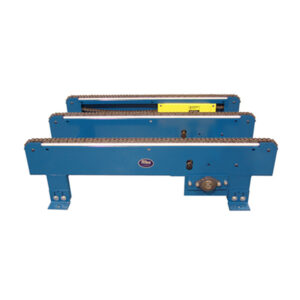
Alba’s standard drag chain conveyors – Alba Manufacturing Inc.
Chain Conveyor, Conveyor, Drag Chain Conveyor, Industrial MachineryAlba’s standard drag chain conveyors – Alba Manufacturing Inc.
up to 4,000 lbs capacity
Drag chain conveyors are composed of heavy-gauge formed chain rails with a welded steel frame, UHMW wear strips, and adjustable heavy-duty structural steel supports, enabling them to withstand the daily rigors of a tough environment. Standard speeds are 30, 45, and 60 feet per minute.
SKU: n/a - Belt Conveyor, Conveyor, Industrial Machinery
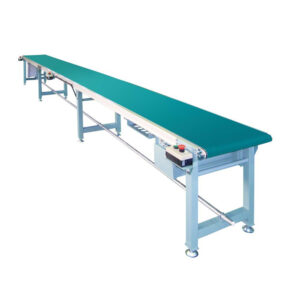
Aluminum frame conveyor for heavy-duty conveying PZ3C – SANEI Co.Ltd.
Belt Conveyor, Conveyor, Industrial MachineryAluminum frame conveyor for heavy-duty conveying PZ3C – SANEI Co.Ltd.
These conveyors are powerful for transporting a variety of products to and from manufacturing sites.
These conveyors are employed in manufacturing sites for a variety of products. Constructed with a sleek and sophisticated aluminum frame, it is compatible with both center drive and head drive systems, and is available in a wide range of models for various applications, including belt types, widths, machine lengths, and speeds. The use of low-noise motors and gearheads also ensures low noise, high reliability, and long-lasting durability.
SKU: n/a - Belt Conveyor, Conveyor, Industrial Machinery
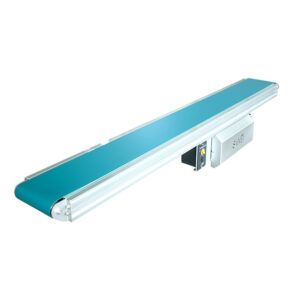
Aluminum frame conveyor for medium load conveying PY2C – SANEI Co.Ltd.
Belt Conveyor, Conveyor, Industrial MachineryAluminum frame conveyor for medium load conveying PY2C – SANEI Co.Ltd.
These conveyors are powerful for transporting a variety of products to and from manufacturing sites.
These conveyors are employed in manufacturing sites for a variety of products. Constructed with a sleek and sophisticated aluminum frame, it is compatible with both center drive and head drive systems, and is available in a wide range of models for various applications, including belt types, widths, machine lengths, and speeds. The use of low-noise motors and gearheads also ensures low noise, high reliability, and long-lasting durability.
SKU: n/a - Belt Conveyor, Conveyor, Industrial Machinery
AquaGard LP Conveyors – Dorner Mfg. Corp.
Sanitary conveyor rated for low pressure wash down with soap and water cleaners.
Dorner’s line of sanitary conveyors are designed to enhance your food safety. With Dorner’s hygienically designed conveyors, you can have confidence in your food handling equipment and be less concerned about product quality. Features such as removable wear strips, belt lifters, and frame cutouts enable quick access to the conveyor frame, meaning our conveyors can be cleaned up twice as fast as the competition.
SKU: n/a - Conveyor, Industrial Machinery, Pneumatic Conveyor
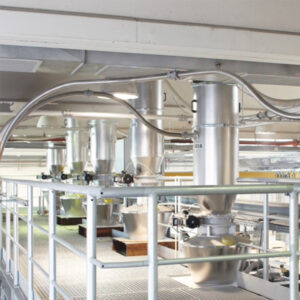
AZO GmbH & Co. KG’s Pneumatic conveying systems – AZO GmbH Co. KG
Conveyor, Industrial Machinery, Pneumatic ConveyorAZO GmbH & Co. KG’s Pneumatic conveying systems – AZO GmbH Co. KG
Extremely high efficiency
The advantages of AZO include a dust-free, closed system, hygienic and operator-friendly design, space and height saving configuration, reliable conveying, and gentle and low-wear operation for both product and plant.
SKU: n/a - Belt Conveyor, Conveyor, Industrial Machinery
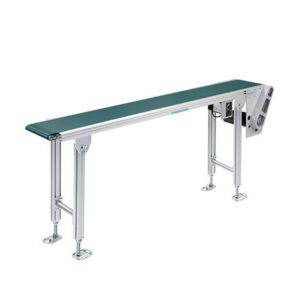
Belcon Mini III Head drive Standard type DHH – Okura Yusoki Co. Ltd.
- Belt Conveyor, Conveyor, Industrial Machinery
Beltor BS (steel) – SANEI Co.Ltd.
The New Standard for Inclined Conveyance!
We have a selection of conveyors that utilize black rubber belts for transporting industrial waste, soil, sand, wood chip powder, and more. Different types of belts, such as flat and medium-density belts, can be installed depending on the location and purpose.
SKU: n/a
Are you looking for a Conveyor product?
1. Conveyor Type and Configuration
Consider the different types of conveyors available, such as belt conveyors, roller conveyors, chain conveyors, or screw conveyors. Evaluate their configurations, including straight conveyors, curves, inclines, or declines, and choose the type that best suits your material handling needs.
2. Load Capacity and Speed
Evaluate the load capacity and speed requirements of your operations. Determine the maximum weight the conveyor needs to handle and the desired conveying speed to ensure efficient material flow. Consider factors such as the size, weight, and type of materials being conveyed.
3. Conveyor Length and Width
Assess the required length and width of the conveyor system. Consider the available space in your facility and the dimensions of the materials being conveyed. Ensure that the chosen conveyor length and width can accommodate your operational needs and any future expansion plans.
4. Power Source and Drive Mechanism
Consider the power source and drive mechanism for the conveyor. Evaluate whether an electric motor, hydraulic system, or pneumatic system is most suitable for your application. Additionally, consider factors such as energy efficiency, maintenance requirements, and compatibility with your facility’s power sources.
5. Material Compatibility and Special Requirements
Determine the compatibility of the conveyor with the materials you will be handling. Some materials may require special considerations, such as heat-resistant belts for high-temperature applications or food-grade materials for handling food products. Evaluate any specific requirements based on your industry and material characteristics.
